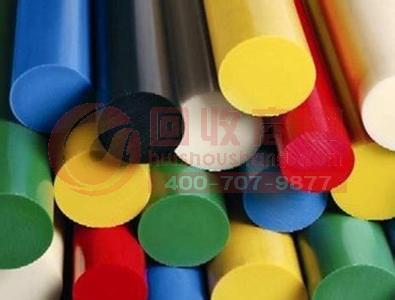Brief introduction of selection principle and modification knowledge performance of heat-resistant plastics

The principle of selection of heat-resistant plastics is usually:
1, consider the heat resistance
a, can meet the heat resistance, do not choose too high, too high will cause cost increase;
b. Use general plastic modification as much as possible. Most of the heat-resistant plastics belong to special plastics, and their prices are high; while the prices of general-purpose plastics are relatively low;
c. Use general-purpose plastics with large heat-resistant modification as much as possible.
2, consider the heat-resistant environmental factors
a, instantaneous heat resistance and long-term heat resistance;
b, dry heat or wet heat;
c, resistance to medium corrosion;
d, aerobic heat or anaerobic heat;
e, loaded heat and no load heat.
Everyone must be surprised by the temperature above. How is the heat distortion temperature of Pa PBT material so low? In fact, if Pa PBT is not modified by heat resistance, its heat resistance is very poor. The following is a detailed description of some examples of heat resistance of plastics after heat-resistant modification.
First, the plastic filling heat-resistant modification: in all fillers, in addition to organic materials, most of the inorganic mineral fillers can significantly improve the heat-resistant temperature of plastics. Commonly used heat-resistant fillers are: calcium carbonate talc powder wollastonite mica calcined clay bauxite and asbestos. And the smaller the particle size of the filler, the better the modification effect.
a, nano-scale filler:
Pa6 is filled with 5% nano montmorillonite, and its heat distortion temperature can be increased from 70 degrees to 150 degrees.
Pa6 is filled with 10% nano sepiolite, and its heat distortion temperature can be increased from 70 degrees to 160 degrees.
Pa6 is filled with 5% synthetic mica, and its heat distortion temperature can be increased from 70 degrees to 145 degrees.
b, conventional filler:
PBT is filled with 30% talcum powder, and its heat distortion temperature can be increased from 55 degrees to 150 degrees.
PBT is filled with 30% mica, and its heat distortion temperature can be increased from 55 degrees to 162 degrees.
Second, the plastic enhanced heat resistance modification
It is better to improve the heat resistance of plastics by the method of reinforced modification. The commonly used heat-resistant fibers mainly include: asbestos fiberglass fiber carbon fiber whisker
1. The crystalline resin is reinforced with 30% glass fiber reinforced heat resistance.
The heat distortion temperature of PBT is increased from 66 degrees to 210 degrees.
The heat distortion temperature of PET is increased from 98 degrees to 238 degrees.
The heat distortion temperature of PP is increased from 102 degrees to 149 degrees.
The heat distortion temperature of HDPE is increased from 49 degrees to 127 degrees.
The heat distortion temperature of Pa6 is increased from 70 degrees to 215 degrees.
The heat distortion temperature of Pa66 is increased from 71 degrees to 255 degrees.
The heat distortion temperature of the POM is increased from 110 degrees to 163 degrees.
The heat distortion temperature of PEEK is increased from 230 degrees to 310 degrees.
2. The amorphous resin is reinforced with 30% glass fiber reinforced heat resistance.
The heat distortion temperature of the PS is increased from 93 degrees to 104 degrees.
The heat distortion temperature of the PC is increased from 132 degrees to 143 degrees.
The heat distortion temperature of aS is increased from 90 degrees to 105 degrees.
The heat distortion temperature of aBS is increased from 83 degrees to 110 degrees.
The heat distortion temperature of the PSF is increased from 174 degrees to 182 degrees.
The heat distortion temperature of MPPO is increased from 130 degrees to 155 degrees.
Third, plastic blending heat-resistant modification
The plastic blending improves the heat resistance, that is, the high heat resistant resin is mixed in the low heat resin to improve the heat resistance. Although this method has a higher heat resistance improvement than the addition of heat resistance modification, it has the advantage of improving heat resistance without substantially affecting its original properties. Such as:
The aBS/PC heat distortion temperature can be increased from 93 degrees to 125 degrees.
The aBS/PSF (20%) heat distortion temperature can reach 115 degrees.
HDPE/PC (20%) Vicat softening point can be increased from 124 degrees to 146 degrees.
The PP/CaCo3/EP heat distortion temperature can be increased from 102 degrees to 150 degrees.
Fourth, plastic cross-linking heat-resistant modification
Plastic cross-linking improves heat resistance and is often used in heat-resistant pipes and cables. Such as:
1. After the HDPE is cross-linked by silane, the heat distortion temperature can be increased from 70 degrees to 90-110 degrees.
2. After the PVC is crosslinked, the heat distortion temperature can be increased from 65 degrees to 105 degrees.
Medical Goggles,Medical Eye Goggles,Medical Safety Glasses,Medical Safety Goggles
Ningbo Autrends Prevention Products Co., Ltd , https://www.autrendsafety.com